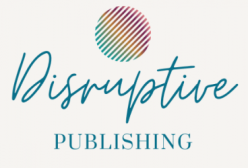
Today I am going to talk to you about writing and publishing a book, which feels a little bit weird, because I feel like I talk about this stuff all the time.
But last week at a networking meeting I was asked, “how do I go from having an idea in my head to holding a book in my hand?”, and at that moment I realised that I don’t actually talk about it all the time at all.
What I do is I talk around it, and I do that because I assume people already know certain things – the things I am going to talk about today.
I am almost always in the company of small businesspeople. They’re my people – my tribe – and I feel very comfortable with them.
Being asked how to write a book is a regular occurrence, but I hadn’t been asked in that way before, and I am super grateful that it happened, because I realised that I’d forgotten what the people around me don’t know.
So that’s what I’m going to talk about today.
Let’s explore how you can go from having an idea in your head to holding a book in your hand.
Here are the 9 STEPS you need to take to go from having an idea in your head to holding a book in your hand:
1. Make sure you have the right idea.
Make sure your idea is directly related to something your target market will want to know more about.
I. Is it based on an FAQ or a specific request from someone in your target audience?
II. Is it something your current customers or clients have talked to or asked you about in the past?
III. Is it something you’ve helped customers or clients with in the past that hasn’t been written about before?
IV. Maybe it’s been written about before but not in the way you view or approach the topic.
2. Turn your idea into an outline for a book.
If you can flesh out your idea and create a decent plan for a book, then you have a potential book.
I. Do you have a good reason for wanting to write this book?
II. Can you easily break your topic down into 3, 5, 7 or 9 parts or steps?
III. Do you think you would be able to contribute a decent amount of content to each part or step?
IV. Will that content add significant value to the readers’ experience?
3. Fill in the content.
If you know your business then this part should be easy for you, but if you don’t know all the content you want to include in the book, research it.
I. Add everything you need to add in order to make your point. No more. No less.
II. Do not hold back thinking that someone might steal your work. The more you add the more trust you will build.
III. Use dot points and check lists. People love them.
IV. Keep it simple. You don’t need to use big words or too many words. Just write the way you speak.
V. If you are including content from elsewhere, be careful not to plagiarise someone else’s work. Add what you have learned using your words from your perspective.
4. Get someone other than you to read your book.
It is impossible to be objective about your own writing, so it’s very important to get feedback from beta readers on the flow of information in the book.
I. Choose beta readers from within your target market. Anyone else’s opinion is neither relevant nor helpful.
II. Give your beta readers a list of questions so they know what sort of feedback would be helpful to you.
III. Apply the feedback you think is appropriate – that’s anything that will enhance the readers’ experience – and leave the rest.
IV. Ask them if you can use any positive feedback as testimonials and include them in the front of the book or on the cover.
5. Engage an editor.
If you want to be seen as a professional, you must have your book professionally edited.
I. Ask other authors for recommendations for editors.
II. Ask for a quote and for any feedback on your book they might like to offer.
III. Ask them to do a sample edit on a chapter of your book before you engage them, to see if you like the way they work.
IV. Ask them for any guidelines rules you should be aware of before you start so you know what to expect from the process.
6. Have your book formatted.
Formatting can be tricky, but the layout of your book is important and can make a big difference to the readers experience of you and your book.
I. Ask the formatter what books they have formatted so you can see examples of their work
II. Have a look at a range of books and start compiling a list of specifications or preferences you would like incorporated into your book e.g. paper size, margins, font type, font size, spacing etc.
7. Have a cover created.
We do judge books by their covers.
I. It’s ok to have an idea of what you want your cover to look like.
II. Show your designer pictures or examples of what you want.
III. Think about what fonts you like and what graphics of photos you would like.
IV. Listen to your designer but at the end of the day choose the cover you are proud of or you won’t put your book in front of anyone.
8. Publish your book to a print on demand platform.
This is the quickest, most convenient to publish your book and make it available to your audience.
I. Choose a print-on-demand platform to publish your print book to that is easy for you to navigate
II. Make sure the platform you choose has the capacity to put your book in front of lots of readers in your target audience
III. Make sure you can easily access author copies for yourself at a wholesale price so that you always have copies with you wherever you go.
9. Order a copy of your book.
Make sure everything looks good before you tell anyone about it.
I. As soon as the print platform has approved your book for print, order a copy for yourself.
II. Once it arrives, go over the book carefully, looking at the layout of the cover and text and any photos you have included int the book.
III. Make sure you can see any photos you have included. Sometimes they don’t translate as well into black and white as we might hope.
IV. Check for anything that looks odd or out of place and if it needs to be changed then change it before uploading another file and ordering another copy.
V. Once you are happy with the look and feel of your proof copy, you can let everyone know you have published your book and either start giving it away as a big business card or let readers know where it is available for them to purchase it.
There. You’ve done it. That’s all you have to do to go from having an idea in your head to holding a book in your hand. Congratulations.
Easy right? Maybe not easy. But it is simple. As long as you follow the plan and don’t cut corners.
And now that you’ve come this far, you might as well publish your book to kindle and audible as well. Give your ideal readers options for consuming your book and you will reach a wider audience.
That’s if from me for this week. I do hope that has been enlightening for you.
I have a free ebook called 7 things you need to know about writing and publishing a book before taking the plunge. I recommend you grab a copy if you are thinking of writing a book because it will definitely set you up for a better experience and a better outcome.
And if you would like to have a chat about the best path to publishing for you, book in for a free information call. Go to calendly.com/disruptivepublishing/freeinfocall.
Authorpreneur’s Bootcamp
Have a great week everyone and I will be back soon.
Bye for now.
